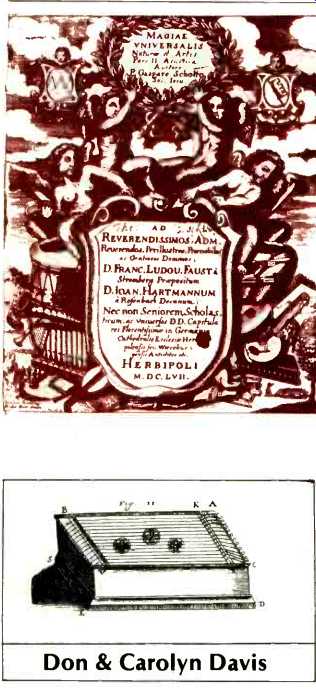
by Don & Carolyn Davis
As we travel about the United States conducting our Syn-Aud-Con seminars, it is our pleasure to seek out sellers of used and old books. During our fall, 1978 tour of the eastern United States, we spent several days in the Williamsburg, Va., area between classes. Poking about, we made our usual inquiry regarding, among other subjects, books on acoustics. The book seller replied, "Well, just one, and it is an old one."
What was brought out for our inspection was a vellum bound, first edition dated 1657 and entitled Magiae Universalis. The author, Kasper Schott (Latinized into Gaspare P. Schotto in the frontispiece--before the advent of the metric system, academia used Latin to protect scientific data from the great unwashed). The publisher was Herbipoli.
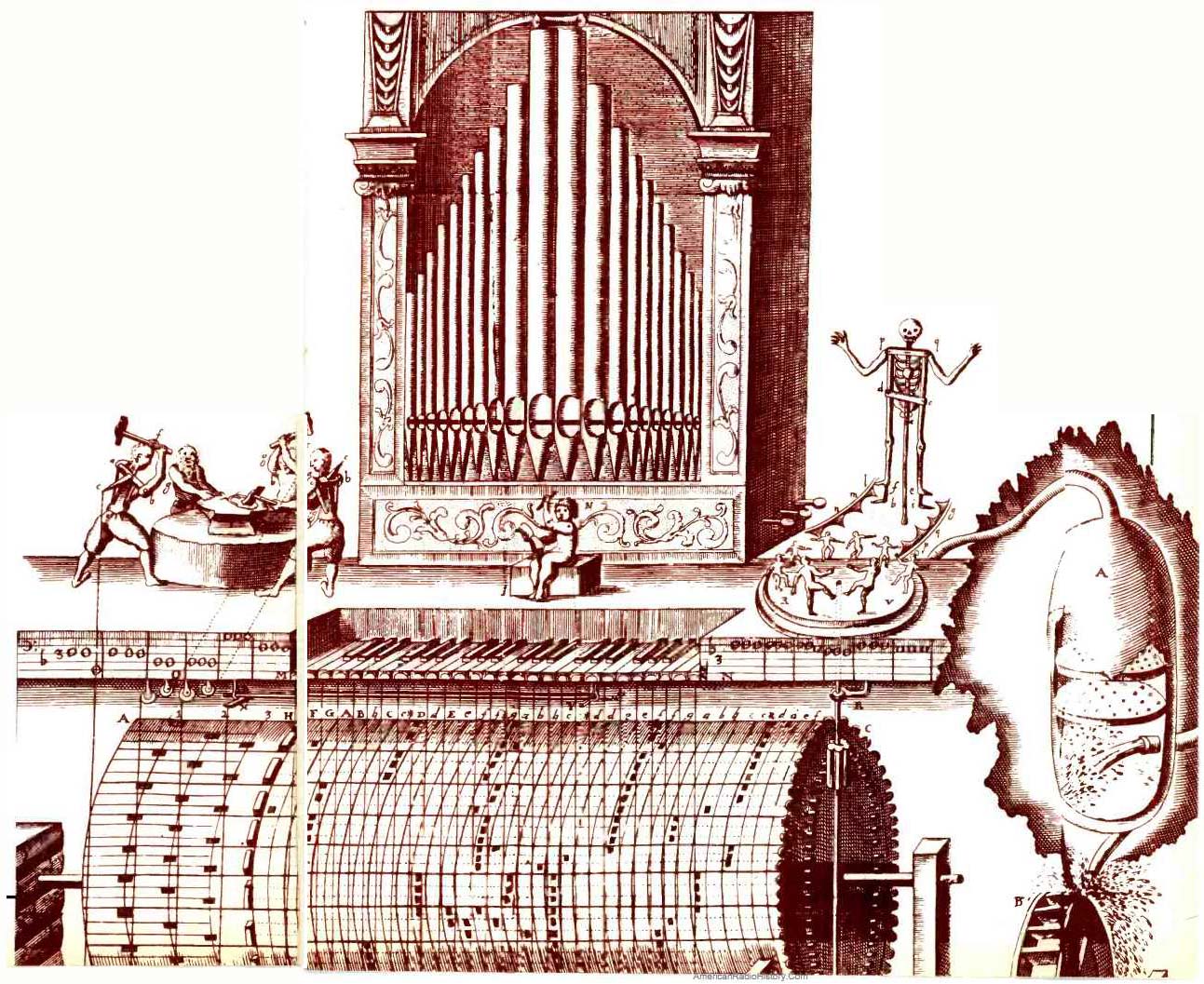
The Renaissance period saw a flowering of publications, as the growing body of knowledge of mechanics was applied to acoustics. The works of Bacon, Galileo, Leonardo Da Vinci, Tychobrahe, Kepler, Stevinus, et al. soon led to the infancy of experimental acoustics.
Schott, a contemporary of Mersenne, Kircher, Von Guericke, Hooke, Boyle, Moreland, and Porta among others, was a Jesuit professor of physics at Wurzburg (1608-1666). Uniquely illustrated, his book is a combination of scientific insight, superstition, and sheer nonsense, as are many present day textbooks on the same subjects. It helps to understand the contributions of such a book when our perspective is placed nearer the time period it represents.
The Arabs for centuries after the beginning of the Christian era preserved the fragments of the earlier Alexandrian science. During the post-Crusade period, the center of instrument making, primarily astronomical instruments, shifted from the Arabian areas to Nuremburg, beginning about 1400 A.D. By the middle of the 16th century, precise engraving on brass was well advanced, due in part to the interest in book printing.
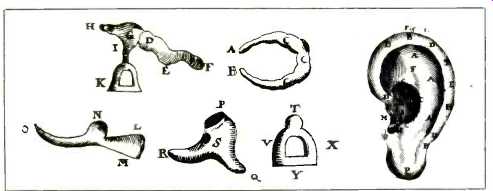
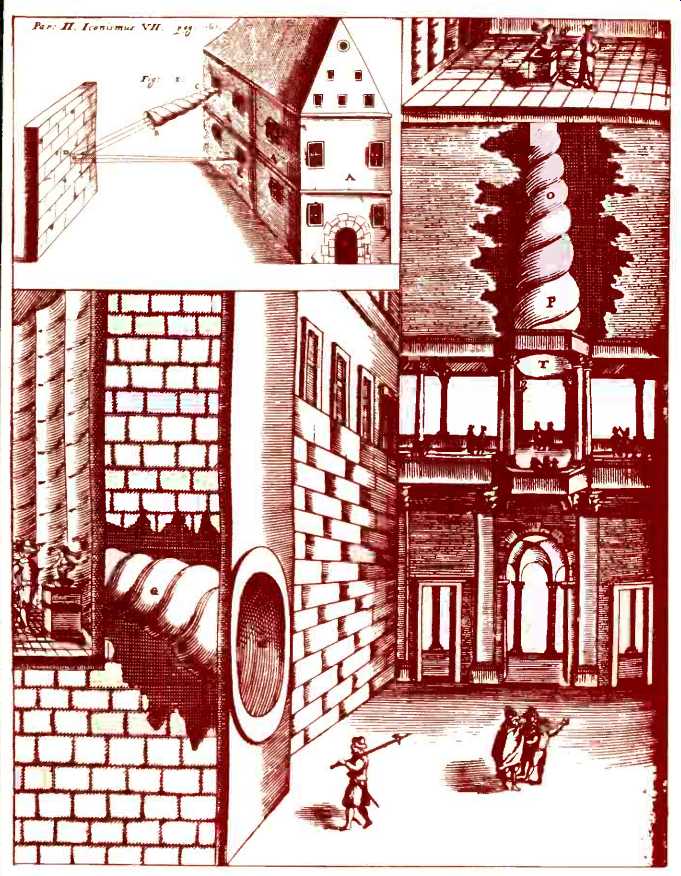
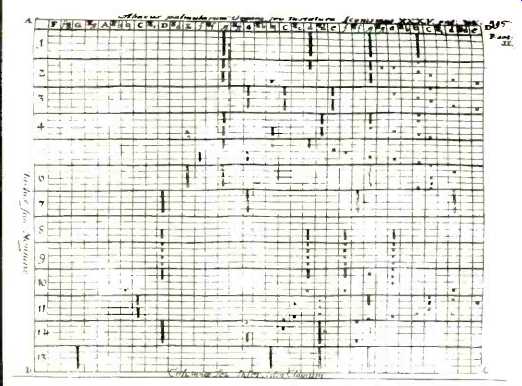
This precision led to improved gears. Gears opened the door to wonderful automata and gadgets such as the Strasbourg clock of 1354. This device included a mechanical rooster which flapped its wings, stretched its metal feathers, opened its beak, and crowed every day at noon. The year 1642 saw Pascal invent and build what is often called the first real calculating ma chine.
Marin Mersenne published his Tra ite de L'Harmonie Universelle in 1627 in which he described the measurement of the velocity of sound--in "pied de roy"--the royal foot (1 toise = 6 paris or pied de roy). Before employing a pendulum, Mersenne found that the human pulse was more reli able as a timer than was respiration.
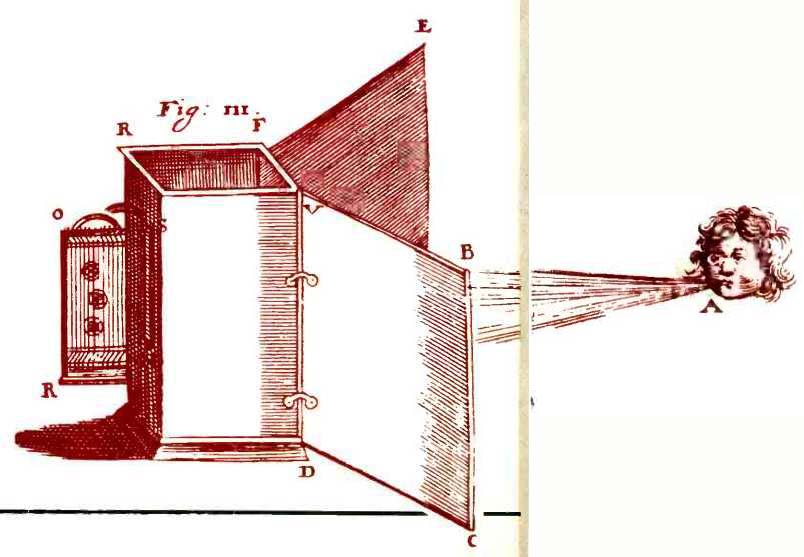
Using "second minutes" (the minute again divided into 60 parts was called a second minute), he came up with 230 toises per second. The pendulum used was called an horloge a secondes minutes, which could be roughly translated "stopwatch." Mersenne's careful calculations as to how long the time delay was in hearing the "last trump" on Judgment Day anywhere in the world revealed a mathematically based experiment system (approximately 10 hours for the most distant listener was his surprisingly accurate conclusion).
Anathanasius Kircher (1602-1680), a professor of mathematics in the Jesuit College of Rome, now the Pontificia Universitas Gregoriana, wrote in 1650 the Musurgia Universalis in which he dealt in some detail with acoustical horns and certain limited aspects of geometry in architectural acoustics. Kircher, so far as can be determined, was the first in a long line of horn advocates who had difficulty in explaining how the devices actually operated.
In the midst of all this acoustical and intellectual ferment, Schott published his book. His most original contribution was a description of Otto Von Guericke's work with air pumps. From this description, Robert Boyle (1627 1691) and his assistant Robert Hooke (1635-1703) made their vast improvement in air pumps and the subsequent experiments with ticking watches in vacuums.
Kircher is quoted at length in Schott's book, and it appears that many of the automatic players for bells, organs, and strings, illustrated in detail in Schott's book, were developed from Kircher's cylindrum phono tactica (levers actuated by teeth projecting from a revolving drum). Many of the horns illustrated were actually constructed.
Kircher built a loudspeaker trumpet 22 palma long (about 16 feet if you assume a palma equals 8.7 inches-the length of a palm). With it, he spoke to the gatekeeper without having to leave his quarters. He also used it as an ear trumpet by means of which he could eavesdrop on conversations taking place in the courtyard-all to the amazement of various visitors who were invited to share the experience. It is reported that similar techniques were used by the tyrant Dionysius, the Elder (430-367 B.C.). Wiretapping, it would seem, has an ancient if not necessarily honorable precedent.
Reproduced here are some of the illustrations from Schott's book. Paper was of better quality in 1657 (one wonders what else); we are told that present-day book paper has only a 25-year life.
The Jacquard Loom (1810) utilized punched cards (actually designed by Falcon in 1728) and is widely considered to be the first use of such programming. Thus it is of major interest to observe the varied programming techniques Schott includes in his book. It seems the ancients are still stealing our inventions.
As Dick Heyser remarked to us upon hearing about our acquisition, "You don't own that book--you are the temporary custodians of it." It is in that spirit that we share these illustrations from Magiae Universalis.
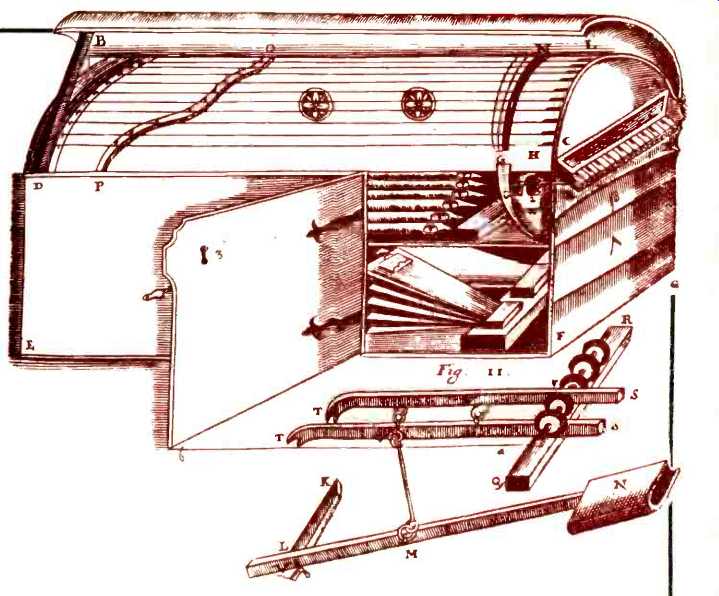
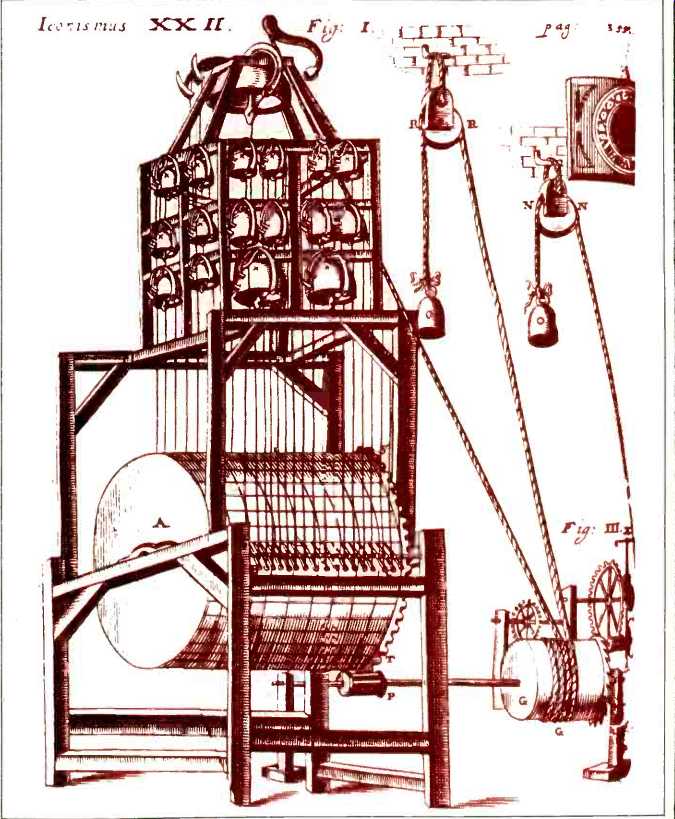
(Source: Audio magazine, Feb. 1981)
Also see:
A History of Home Recording (Apr. 1975)
"I See What You Mean!" How the Westrex 45/45 System Was Adopted by the Record Makers (Mar. 1975)
= = = =